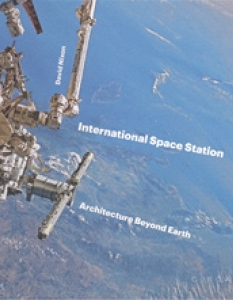The main triumph of the International Space Station (ISS) project is not so much the experiments conducted on board (though of course many of them are important in the context of human space exploration) but the fact that it is a football field-sized structure built in Earth orbit. This aspect is fully recognised by the author of this book, an architect with “a particular interest in designing for space exploration” and one of “a handful of architects invited to work on the design” of the ISS.
His intention, in this significant tome, is to celebrate the ISS, demystify the technical aspects (in part by eschewing acronyms and jargon) and “hold the attention of readers…without them dozing off”. Always a good plan! He does this in four main sections covering specific successive periods between 1979 and 2011 and includes a decent index, a reference section and a short glossary. The book also includes a memoir from NASA astronaut (and ROOM contributor) Nicole Stott, who writes about her impressions of living on the ISS.
As one might expect from a book that concentrates on the architecture of the Station, there are numerous module diagrams of both early concepts and actual ISS assembly, and it is instructive to have both together for comparison. The historical analysis of the many precursor designs is particularly interesting. The book is illustrated with colour photography throughout and shot selection is good, though reproduction is spoiled somewhat by the matt paper; this is not a glossy coffee-table book.
However, the book is large enough to cover the main points of the Space Station’s design history while still having room for issues of detail, such as windows, which have been an issue in spacecraft design since the famous argument about the Mercury capsule. The author mentions the equally famous Skylab window, which architectural consultant Raymond Loewy championed “as its recreational value alone…would justify its cost”. ISS astronauts would no doubt agree, and windows - even a cupola - are now seen as de rigeur. It’s unlikely that this is the only book on the ISS that space aficionados will want but it should certainly be on their list.
Mark Williamson











